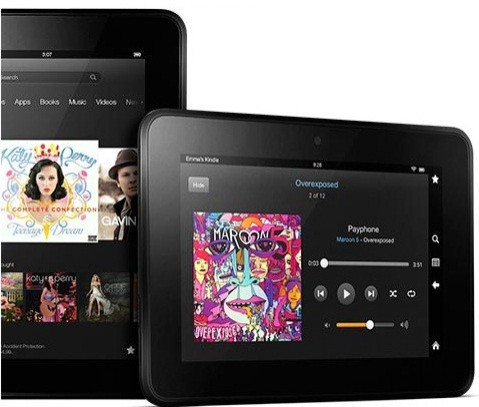$99 Amazon Kindle Fire HD With 7-Inch Display May Or May Not Be On The Way In 2013, But Cheap Devices Are Definitely Driving Growth Of The Tablet Market

A report this week that Amazon.com Inc. (NASDAQ:AMZN) has a $99 Kindle Fire HD device with a 7-inch display already in production for shipping this year caught the eyes of almost everybody with an interest in the tablet market.
TechCrunch reported Wednesday that the existing $199 Kindle Fire HD and the rumored $99 Kindle Fire HD would feature strikingly similar specifications, such as a 7-inch display, 1280×800 screen resolution and a Texas Instruments Inc. (NASDAQ:TXN) processor. As a result, TechCrunch indicated the company is basically planning to cut its lowest price for what is essentially either the same or a similar device by about one-half.
Subsequently, multiple media outlets reported Amazon appeared to have an issue with that indication. On this point, SlashGear said a company representative told it, “It’s not happening -- we are already at the lowest price points possible for that hardware.”
Regardless of whether Amazon introduces a $99 Kindle Fire HD, it is crystal-clear that cheap devices are driving the growth of the tablet market globally, according to the information-technology market researcher International Data Corp. IDC on March 12 boosted its Worldwide Quarterly Tablet Tracker estimate for 2013 shipments to 190.9 million units from 172.4 million units.
IDC also hiked its estimates for shipments of tablets during the forecast period between 2013 and 2016 by an average of 11 percent. As a result, the market researcher anticipates more than 350 million shipments in 2017.
And the key drivers of the growth in both actual and projected shipments are a plethora of tablets as affordable as they are small.
“One in every two tablets shipped this quarter was below 8 inches in screen size. And in terms of shipments, we expect smaller tablets to continue growing in 2013 and beyond,” said Jitesh Ubrani, a research analyst for IDC's Tablet Tracker. “Vendors are moving quickly to compete in this space as consumers realize that these small devices are often more ideal than larger tablets for their daily consumption habits.”
Meanwhile, IDC also forecast that in 2013 the proportion of shipped tablets employing the Apple Inc. (NASDAQ:AAPL) iOS operating system will be smaller than the proportion of shipped tablets using the Google Inc. (NASDAQ:GOOG) Android operating system, marking the first time this has happened in the market's short history. In the overall market this year, IDC projected the Android share will rise to 48.8 percent (from an actual 46.3 percent last year) and the iOS share will fall to 46.0 percent (from an actual 51.3 percent last year).
Eventually, IDC forecast, both Android and iOS devices will surrender some market share to Microsoft Corp. (NASDAQ:MSFT) Windows-based tablets, with shipments of Windows 8 devices projected to grow to 7.4 percent in 2017 from 1 percent in 2012. However, the market researcher appeared completely unimpressed by the growth prospects for Microsoft's Windows RT.
“Microsoft's decision to push two different tablet operating systems, Windows 8 and Windows RT, has yielded poor results in the market so far,” said Tom Mainelli, IDC's research director for tablets. “Consumers aren't buying Windows RT's value proposition, and long term we think Microsoft and its partners would be better served by focusing their attention on improving Windows 8. Such a focus could drive better share growth in the tablet category down the road.”
Check out IDC's "Worldwide Tablet Market Forecast by OS, Unit Shipments, 4Q 2012" here:
© Copyright IBTimes 2024. All rights reserved.






















